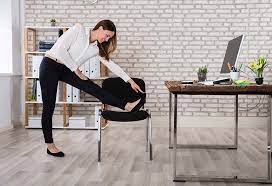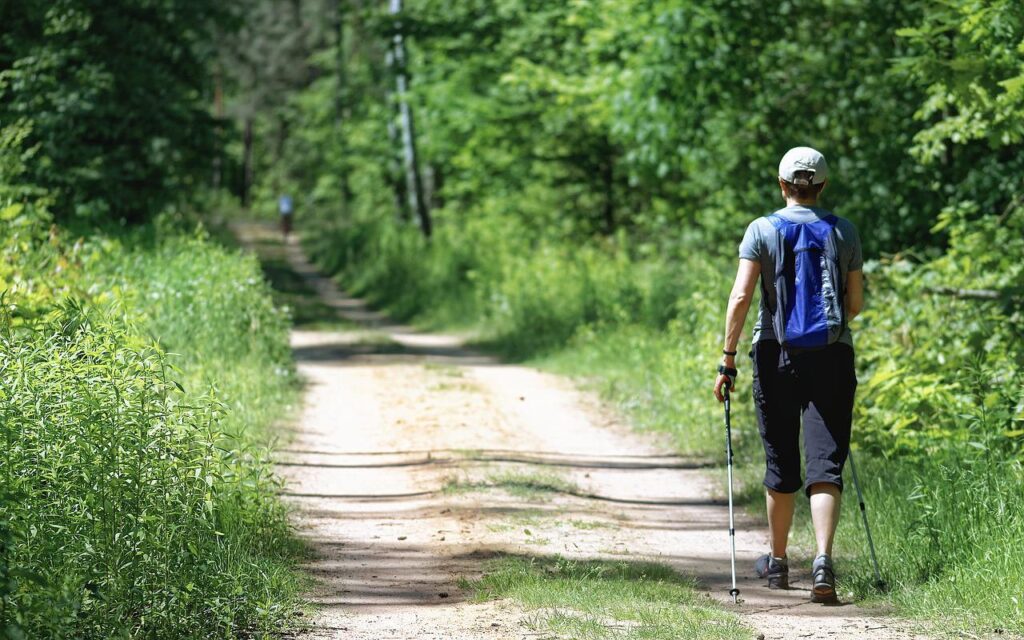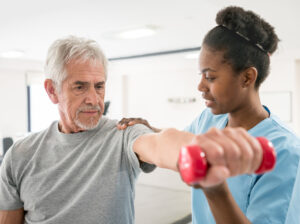Muscle spasms are common–and can be debilitating–at least in the short term. While most muscle cramps pass within a few minutes, some can last quite awhile or happen so often they’re considered chronic. Whether you have an occasional spasm in your back or you suffer from foot cramps most nights, it’s time to better understand what’s going on and what you can do about it.
What is a Muscle Spasm?
Most of us know what they feel like, but what’s actually happening? Muscle spasms, or cramps, happen when a muscle suddenly, and forcibly, contracts, then fails to relax.
What Causes Muscle Spasms?
Although unpredictable and uncontrollable, there are contributing factors commonly associated with muscle cramps. 
- Muscle fatigue or overuse–from cleaning the house to hitting the gym too hard, overuse can cause your muscles to tire, setting them up for cramping.
- Dehydration is another significant factor in the equation.
- Low electrolytes–a depletion of the salts and minerals in your system, often caused by heat or overexertion.
- Injury–A prior strain or injury can result in the body guarding against a similar injury in the future. This constant state of readiness can cause muscles to spasm.
- Prolonged sitting and poor posture can also manifest muscle spasms
- Stress–we all know when we stress, we’re not at our best. Tight shoulders, holding in breath, and poor sleep can all contribute to muscle responses.
- Diet–there may be a dietary connection to your muscle issues.
Are Muscle Cramps an Emergency?
From a health perspective, muscle cramps are rarely a medical emergency. Although a trip to the emergency room is not uncommon when a long-lasting back spasm takes you down, for the sake of finding relief if nothing else.
There are times, however, when a call to your doctor is advised. Dial up the phone if you experience substantial or uncontrollable pain, numbness in one or both legs, noticeable swelling in the location of the cramp, skin changes in the area, or the inability to sleep due to cramping.
How Do I Treat Muscle Spasms at Home?
- When a muscle spasm hits, it typically demands your immediate attention. If the cramp is in the lower extremities such as the foot, calf, or thigh, try to walk it out. Often using the surrounding muscles, ligaments and tendons will facilitate the release of the cramp.
- Try gentle stretching to relax the affected muscle. Massage or counter pressure may also provide relief.
- Drink a large glass of water and keep the hydration going to potentially help with additional cramps.
- Since cramps are often a result of overexertion, be sure to factor in plenty of rest too.
- For intense muscle cramps, such as when your back seizes up, use ice for 20 minutes every hour for the first few days. After three to five days, alternate heat and ice or rely on heat alone.
- If approved by your doctor, use anti-inflammatory medication such as Ibuprofen. Your doctor may additionally prescribe muscle relaxants.

How Can Physical Therapy Help With Muscle Cramps?
You’ll receive a targeted plan so you can progress away from the pain while increasing your strength and activity level. This may include instructions on proper stretching prior to activities, or treatment of an injury to prevent muscle knots from forming.
In addition to offering guidance about what exercises to do and which ones to avoid, physical therapy can offer a higher level of ice and heat therapy, E-Stim treatments, and massage. Exercises inside the office and at home will address posture, weak muscles, inflexibility, and stress that may be contributing to the issue.
Can I Prevent Muscle Cramps?
Maybe and maybe not. Again, it depends on the core issue. However, you can reduce your risk of a repeat performance by staying hydrated and participating in moderate exercise on a regular basis. Avoid over straining muscles through work or working out and minimize physical exertion in hot weather. Also, wear properly fitting and supportive shoes. Finally, create a habit of gentle stretching in the morning and again before bed, as well as after exercise. 
Most muscle spasms will disappear without issues. However, if you struggle with chronic muscle cramps or have other coinciding symptoms, a visit to your primary doctor or physical therapist can set you on the right track to recovery. Give Encore a call to find out how we can help!
 In order to take your PT on the road, you’ll need to have a good plan in place and an ongoing relationship with your physical therapist. Don’t just leave town, ditch appointments, and skip your exercises or you’ll lose ground in your progress.
In order to take your PT on the road, you’ll need to have a good plan in place and an ongoing relationship with your physical therapist. Don’t just leave town, ditch appointments, and skip your exercises or you’ll lose ground in your progress. 


 Whether your favorite activity is contact football or a leisurely game of golf, sports injuries are incredibly common. Sprains, fractures, breaks, pulled muscles, and misalignment are just a few examples. When a sports injury happens, your first course of action should be to evaluate whether you need a trip to your primary doctor, urgent care, or the ER. For injuries that require medical care, your provider will probably tell you whether PT is a good course of action. See your primary provider if the injury came with sharp, sudden pain that gets worse with movement, significant swelling, or an inability to move the injured area.
Whether your favorite activity is contact football or a leisurely game of golf, sports injuries are incredibly common. Sprains, fractures, breaks, pulled muscles, and misalignment are just a few examples. When a sports injury happens, your first course of action should be to evaluate whether you need a trip to your primary doctor, urgent care, or the ER. For injuries that require medical care, your provider will probably tell you whether PT is a good course of action. See your primary provider if the injury came with sharp, sudden pain that gets worse with movement, significant swelling, or an inability to move the injured area.  Depending on the type of surgery, your doctor may suggest, or even mandate, physical therapy as part of your rehabilitation. It’s an essential part of the process. If your doctor recommends it, don’t delay the process.
Depending on the type of surgery, your doctor may suggest, or even mandate, physical therapy as part of your rehabilitation. It’s an essential part of the process. If your doctor recommends it, don’t delay the process. 
 There are countless studies concluding the positive benefits of exercise, such as improved body image, increased energy levels, reduced stress, elevated mood, better sleep, and higher self-confidence. Exercise is also a central component of most mental health treatment plans.
There are countless studies concluding the positive benefits of exercise, such as improved body image, increased energy levels, reduced stress, elevated mood, better sleep, and higher self-confidence. Exercise is also a central component of most mental health treatment plans.  Your PT is an important tool in maneuvering through those feelings. He or she will meet you wherever you’re at in regards to your fitness abilities. They will create a plan that will get you moving again while considering your limitations. In short, there is an exercise plan for every ‘body’ and your PT will help identify it so you can reap the stress-reducing rewards.
Your PT is an important tool in maneuvering through those feelings. He or she will meet you wherever you’re at in regards to your fitness abilities. They will create a plan that will get you moving again while considering your limitations. In short, there is an exercise plan for every ‘body’ and your PT will help identify it so you can reap the stress-reducing rewards. 





